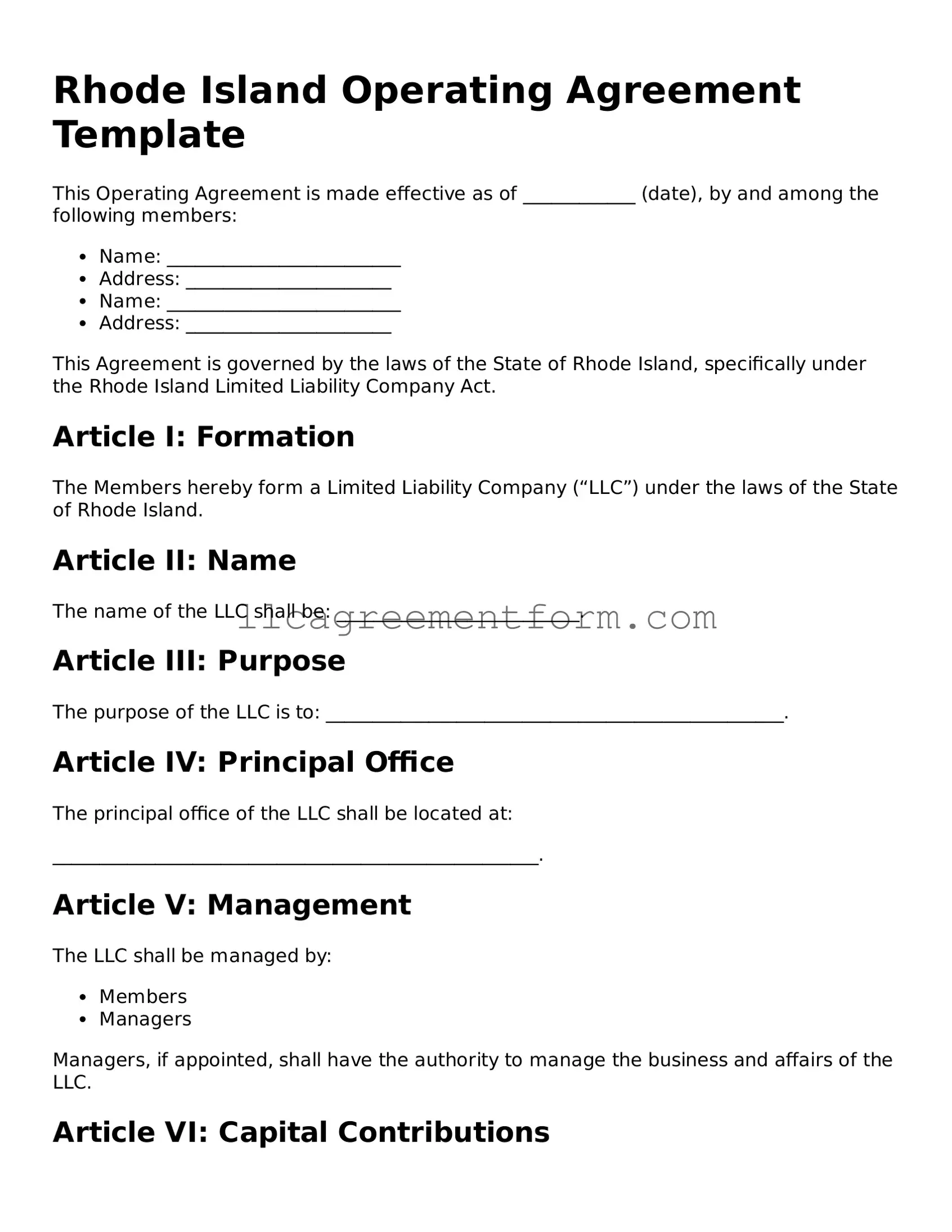The Rhode Island Operating Agreement form is a crucial document for individuals and groups forming a limited liability company (LLC) in the state. This form outlines the internal operations of the LLC, including the rights and responsibilities of its members, management structure, and procedures for decision-making. It serves as a foundational agreement that governs how the LLC will function, addressing aspects such as profit distribution, member contributions, and procedures for adding or removing members. Additionally, the Operating Agreement can specify how disputes among members will be resolved and detail the process for amending the agreement in the future. By clearly defining these elements, the Operating Agreement helps prevent misunderstandings and conflicts, ensuring that all members have a shared understanding of their roles and obligations. In Rhode Island, while the Operating Agreement is not legally required, having one is highly recommended to protect the interests of all parties involved and to provide clarity as the business grows and evolves.
